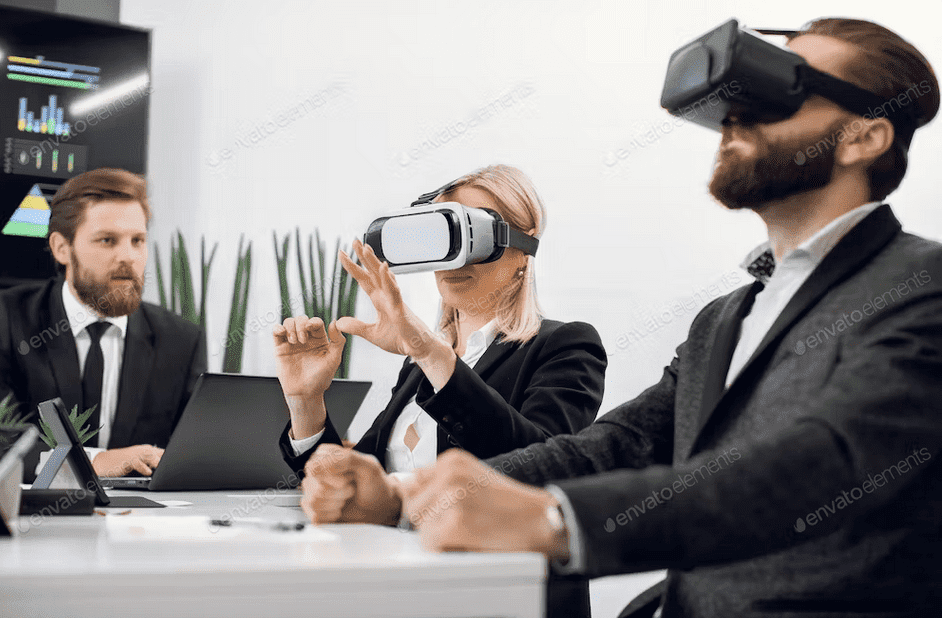
Revolutionizing Training: Navigating the Impact of Virtual Reality and the Metaverse
Meeting the Training Challenge Head-On
Employers are facing the challenges of a new era in workforce development. The importance of upskilling remains crucial, but the landscape has changed, making traditional in-person training more difficult in the age of remote and hybrid work. While online courses attempt to bridge the gap, they fall short in some areas. How can organizations effectively address this training dilemma? In this new era of remote and hybrid work, employers are indeed facing challenges in workforce development. While traditional in-person training may not be as feasible, there are still effective ways to address the training dilemma.
One solution is to leverage technology to create engaging and interactive online training programs. Employers can explore various platforms that offer virtual classrooms, video conferencing tools, and interactive learning modules. These technologies provide opportunities for employees to participate in real-time discussions, ask questions, and receive immediate feedback from trainers or peers. To maximize the effectiveness of remote training programs, it’s essential for organizations to establish clear goals and objectives for employee development. By strategically aligning training initiatives with specific skill gaps and business needs, employers can effectively tailor the content to meet the unique requirements of their workforce. This approach not only ensures that employees receive targeted training, but also guarantees that the training directly contributes to enhancing their skills and improving overall productivity. By identifying the specific areas where improvement is needed, employers can develop comprehensive training programs that address those gaps and provide employees with valuable knowledge and tools to excel in their roles. Consequently, this results in a well-equipped workforce that can meet the challenges of a rapidly changing business landscape.
Virtual reality (VR) has been renowned for its ability to teach challenging skills using realistic simulations. It has proven itself in various fields, from training airplane pilots to equipment maintenance. As the metaverse gains prominence, VR is becoming an integral part of the landscape. According to the PwC 2022 US Metaverse Survey, 51% of companies are either integrating VR into their strategies or have already incorporated it into specific lines of business. Interestingly, 34% believe that the metaverse offers
a more effective way to develop and train our people.
Beyond hard skills, there’s a growing realization that soft skills, such as leadership and resilience, are equally vital. Surprisingly, VR and metaverse experiences emerge as effective tools for imparting these essential skills.

Unlocking the Potential of VR Soft Skills Training
To explore the efficacy of VR in soft skills training, we conducted a study focusing on inclusive leadership training for new managers across 12 US locations. The findings revealed that VR accelerates the upskilling process, even in times of shrinking training budgets and limited in-person options.
Crafting a Blended Learning Approach
While VR won’t replace traditional training methods entirely, it should undoubtedly play a vital role in a blended learning curriculum. As the metaverse evolves and remote work becomes the norm, incorporating VR learning becomes essential. A well-designed VR course, like our soft skills training for executives practicing recent sales approaches, can seamlessly integrate into the metaverse, offering a human-centered experience that enhances productivity without compromising quality.
As organizations embrace the transformative power of VR and the metaverse, the future of training unfolds. VR, with its ability to accelerate learning, boost confidence, and create immersive experiences, stands as a cornerstone in the evolution of workforce development. The metaverse isn’t just a destination; it’s a journey, with “onboarding and training” emerging as the most common entry point for companies into this new realm, according to the PwC 2022 US Metaverse Survey. The key lies in adopting a forward-thinking approach, where VR and the metaverse become integral components of a holistic training strategy. In today’s rapidly evolving business landscape, organizations are recognizing the transformative potential of virtual reality (VR) and the metaverse for training purposes. VR offers unique advantages such as accelerated learning, enhanced confidence-building, and immersive experiences, making it a crucial element in the evolution of workforce development. The metaverse is not just a static destination; it represents an ongoing journey for businesses. According to the PwC 2022 US Metaverse Survey, “onboarding and training” have emerged as the most common entry point for companies venturing into this new realm. This highlights the importance of integrating VR and the metaverse into a forward-thinking approach that considers them as integral components of a holistic training strategy. By leveraging VR technology, organizations can create realistic simulations that allow employees to practice their skills in safe virtual environments. This enables learners to gain hands-on experience without real-world consequences and empowers them to build confidence in their abilities more quickly. Moreover, VR-based training programs offer immersive experiences that engage multiple senses, leading to better knowledge retention compared to traditional methods. Learners can interact with virtual objects or scenarios in ways that closely resemble real-life situations, enabling them to develop practical skills efficiently. When combined with the metaverse – an interconnected digital space where users can interact with each other and digital content – VR becomes even more powerful. The metaverse provides opportunities for collaborative learning experiences where employees from various locations can connect virtually and learn together. It also allows access to vast repositories of knowledge resources that span industries and disciplines.
To fully harness these benefits, organizations need a forward-thinking mindset when it comes to incorporating VR and the metaverse into their training strategies. They should prioritize designing engaging content tailored specifically for virtual environments while ensuring seamless integration with existing training processes. Embracing the potential of VR and the metaverse for training purposes is a key step in future-proofing workforce development. By adopting a forward-thinking approach and integrating these technologies into a holistic training strategy, organizations can unlock new levels of engagement, effectiveness, and efficiency in their employee development initiatives.
Statistics and references from: https://www.pwc.com/us/en/tech-effect/emerging-tech/virtual-reality-study.html

Training workers on real
situations in real time-
without the risks of the real world.